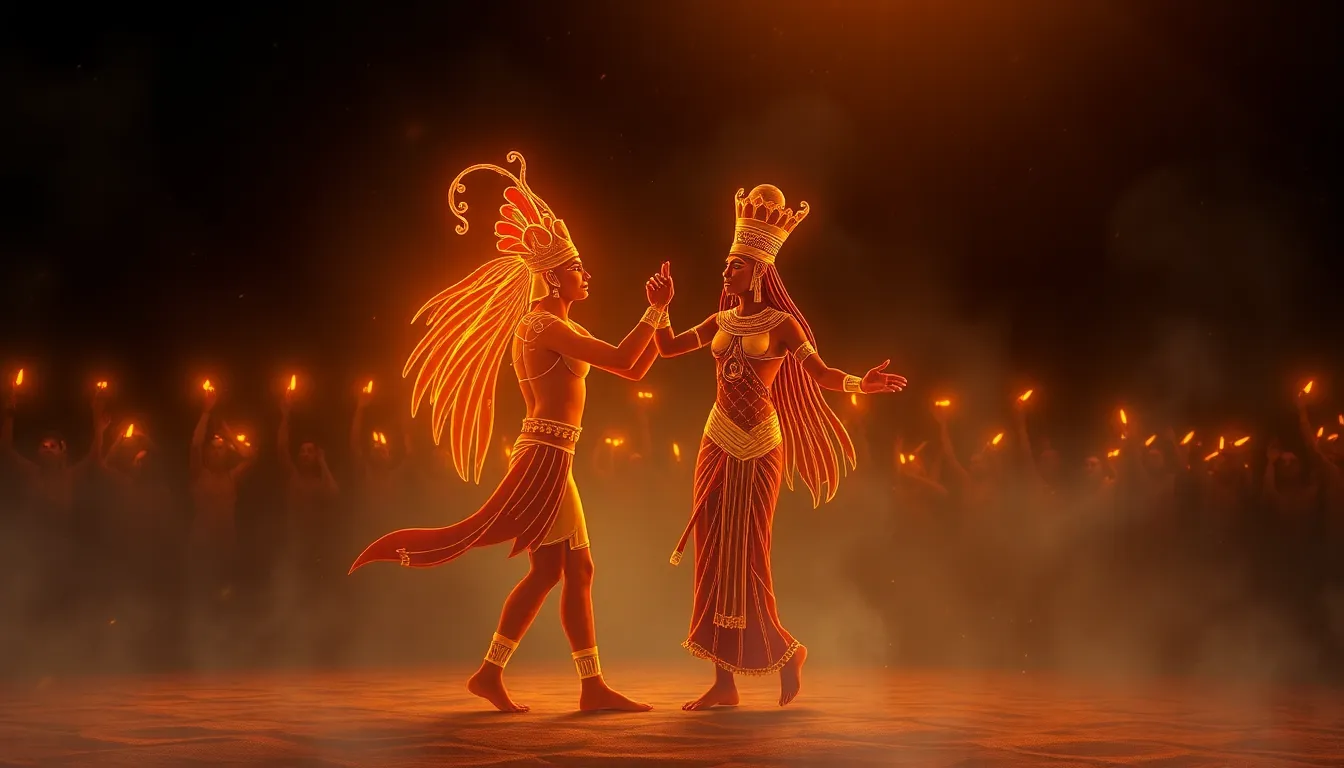The Story of the First Dance: Hathor and the Origins of Celebration
I. Introduction
Dance is a universal language that transcends cultures and epochs, embodying the essence of human expression. It serves not only as a form of entertainment but also as a medium for social bonding and spiritual connection. In ancient Egypt, dance held a significant place in the hearts of the people, especially as a means of celebrating life and the divine.
Central to this celebration is Hathor, the goddess of music, dance, and joy, revered in ancient Egyptian mythology. As a multifaceted deity, Hathor represented not only the arts but also fertility, motherhood, and love. This article aims to delve into the myth of Hathor, exploring her origins and the profound impact of dance as a form of celebration throughout history.
II. Who is Hathor?
Hathor, one of the most beloved deities in ancient Egyptian religion, is often depicted as a cow or a woman with cow horns, symbolizing her nurturing and motherly qualities. She was worshipped across Egypt, and her cult center was located in Dendara, where her temple still stands today.
The attributes associated with Hathor include:
- Music and dance
- Fertility and motherhood
- Joy and celebration
- Protection and healing
Her role in the lives of ancient Egyptians was significant; she was seen as a protector of women in childbirth, a goddess of music and revelry, and a facilitator of love and happiness. Festivals in her honor were among the most joyous occasions, filled with dance, music, and communal gatherings.
III. The Myth of the First Dance
The story of Hathor’s creation is intertwined with the origins of dance. According to myth, Hathor emerged from the laughter of the sun god Ra, embodying joy and vitality. Her first dance was said to have caused the earth to vibrate, and rivers to flow with merriment, marking the beginning of celebration in the world.
The symbolism of her dance represents:
- Life and fertility
- Joy and communal celebration
- Connection between the divine and humanity
This divine dance was not just an isolated event; it fostered a sense of community and connection among the people, encouraging them to gather in celebration of life, love, and the abundance of nature.
IV. Dance as a Form of Celebration
In ancient Egypt, dance was integral to religious and cultural ceremonies. It served as a means of communicating with the gods and expressing gratitude for the gifts of life. Festivals dedicated to Hathor were characterized by:
- Vibrant music played on harps and flutes
- Colorful costumes and elaborate masks
- Group dances that involved the entire community
Hathor’s influence on social gatherings was profound. Her celebrations became a way for Egyptians to come together, share food, and express joy collectively. The connection between dance, music, and communal joy was a vital aspect of these festivals, reinforcing social bonds and fostering a sense of belonging.
V. The Evolution of Dance and Celebration
The evolution of dance from ancient times to modern celebrations reflects the shifting dynamics of culture and society. While the essence of dance as a form of expression remains, its styles and meanings have transformed.
Across different cultures, dance has taken on various forms, including:
- Ritual dances that invoke the spirits
- Social dances that promote community interaction
- Performance arts that showcase cultural heritage
The enduring legacy of Hathor’s influence is evident in modern celebrations, where dance continues to be a central element in festivals, weddings, and communal gatherings, linking past traditions with contemporary practices.
VI. The Psychological and Social Importance of Dance
Dance is not just a physical activity; it has profound psychological and social implications. Research shows that dance can:
- Enhance emotional expression and release
- Foster a sense of community and belonging
- Improve mental health and well-being
The role of dance in rituals highlights its importance in cultural identity and spiritual expression. It serves as a form of therapy, allowing individuals to connect with their emotions and with others in a shared experience of joy and celebration.
VII. Modern Celebrations Inspired by Ancient Traditions
Many modern festivals and celebrations draw inspiration from ancient traditions, incorporating dance as a central component. Examples include:
- The New Year’s celebrations, featuring traditional dance performances
- Carnivals around the world that celebrate cultural heritage through dance
- Weddings that incorporate folk dances and traditional music
The influence of ancient Egyptian traditions, particularly those associated with Hathor, can be seen in these contemporary practices. The relevance of Hathor’s story continues to resonate, reminding us of the joy and connection that dance brings to our lives.
VIII. Conclusion
In summary, Hathor embodies the origins of dance as a form of celebration, serving as a symbol of joy, community, and life itself. Her myth highlights the universal nature of dance as a means of expressing human experience and fostering connections among people.
As we reflect on the enduring legacy of dance in our society, let us embrace the spirit of celebration that Hathor inspires. Whether through personal expression or communal gatherings, dance remains a vital part of our cultural heritage, inviting us to celebrate the joy of existence together.




